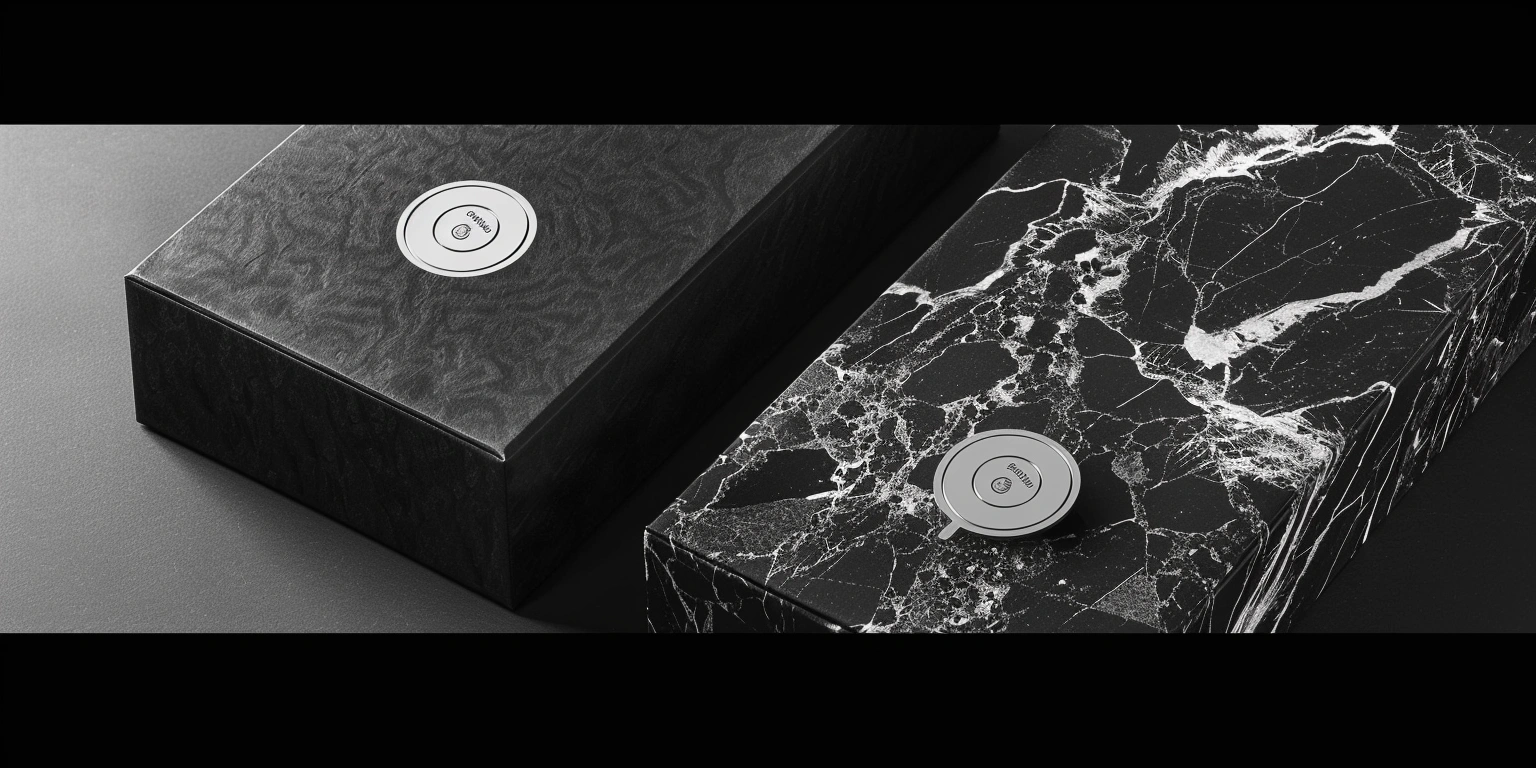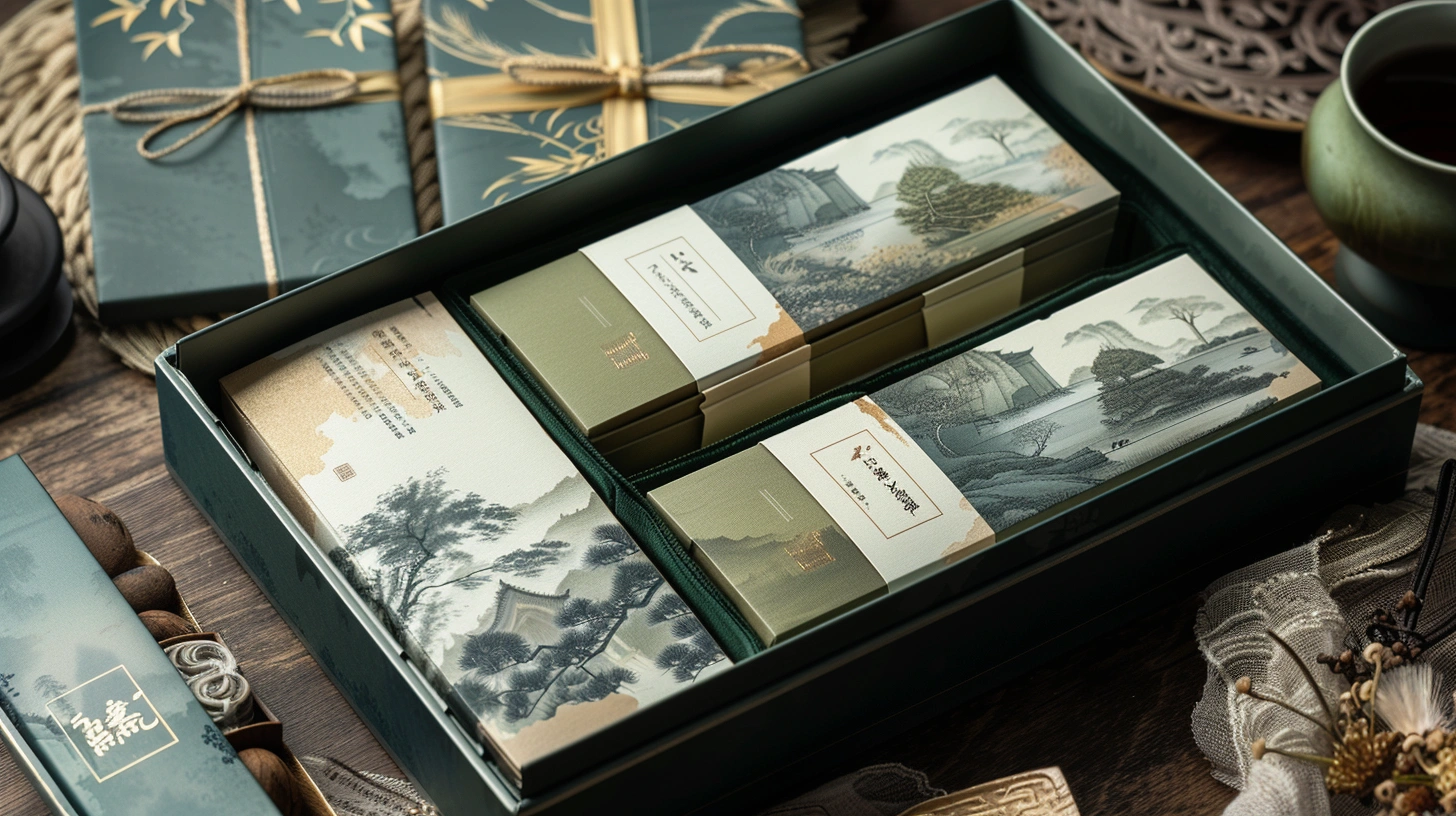
Jewelry Packaging Solutions: The Application of XrheaBox in Luxury and Protection
Lead — conclusion: Jewelry brands achieve fewer carton defects and higher perceived value when rigid-box wraps, insert boards, and liners are engineered as a single system around XrheaBox form factors.
Value (before → after, with condition, [Sample]): Return-related damages fell from 2.9% to 1.3% (Δ=1.6 percentage points) for e-commerce jewelry SKUs when dyne levels were raised from 38 to 42 mN/m and OEE improved by 7.8 percentage points at 160–170 m/min (N=38 SKUs, 12 weeks, North America, mixed SBS/GC2 lots).
Method (3 actions): 1) Centerline surface energy and wrap adhesion to the board; 2) Build a RunLength-specific OEE loss tree and eliminate changeover/makeready waste; 3) Apply a gated switch to water-/soy-based inks with low-migration verification.
Evidence anchors: ΔOEE=+7.8 percentage points (MES/REC-2147), ΔDyne=+4 mN/m (ASTM D2578), tape test ≥4B (ASTM D3359), low migration per EU 2023/2006 GMP file QA/COC-1198.
Adhesion and Surface Energy Targets for Folding Carton
Setting SBS/GC2 carton surfaces to 40–44 mN/m at 23 °C enables wrap adhesion that meets ASTM D3359 4B–5B and reduces edge-lift incidents by ≥60% at 6–8 N/25 mm peel loads (N=18 lots).
Data: Surface energy 40–44 mN/m (ASTM D2578) at 23 ±2 °C, RH 50 ±5%; lamination at 70–85 °C platen, 0.35–0.45 MPa, dwell 0.8–1.0 s; press speed 160–170 m/min; substrates: SBS 350–450 g/m² C2S and GC2 300–380 g/m²; adhesives: water-based EVA or PUR (solids 50–55%). Tape test rating 4B–5B (ASTM D3359) and peel 90° 6–8 N/25 mm @ 300 mm/min (ISO 8510-2).
Clause/Record: ISO 12647-2 §5.3 (color tolerance ΔE2000 P95 ≤1.8 @ 160–170 m/min); BRCGS Packaging Materials Issue 6 §5.6 (product safety & GMP); FSC CoC claims for board lots (FSC-CERT-5521); DMS batch records LAM/REC-3021 (NA retail & e-commerce, jewelry end-use).
Steps:
- Process tuning: Raise dyne to 42 ±2 mN/m via corona 0.8–1.0 kW·min/m²; verify with 38–44 mN/m test inks (±1 mN/m repeatability).
- Process governance: Lock lamination centerline 75 °C/0.4 MPa/0.9 s; use SMED kit to pre-heat platens 10 min before changeover.
- Inspection calibration: Calibrate peel tester monthly per ISO 7500-1; tape test per ASTM D3359 Method A twice per shift.
- Digital governance: Log dyne/peel results to MES with lot/bobbin ID; out-of-window alerts when dyne <39 mN/m or peel <6 N/25 mm.
Risk boundary: Level-1 rollback when tape test falls to 3B or dyne <39 mN/m—reclean, re-corona, and re-laminate 10-case quarantine; Level-2 rollback if two consecutive lots fail—switch to primered wrap (2–3 g/m²), hold shipment, notify QA Owner.
Governance action: QMS deviation and CAPA in DMS/CAPA-4412; internal BRCGS audit rotation Q2; Owner: Process Engineering Manager.
Case — premium ring line
For a holiday drop (EU retail + NA DTC), we moved the ring insert board from 320 to 360 g/m² GC2 and set wrap targets to 42 mN/m; 12-week results showed corner-lift claims down from 1.1% to 0.3% (N=9 SKUs). The specification included XrheaBox magnetic gift boxes and jewelry ring box variants using the same dyne and peel window, simplifying QA release by 22 minutes/order (DMS/QA-LOG-5873).
| Substrate/Coating | Target Surface Energy (mN/m) | Primer | Tape Test (ASTM D3359) | Lamination (°C/MPa/s) | Notes |
|---|---|---|---|---|---|
| SBS 400 g/m² C2S + matte PP | 41–43 | No | 5B | 75/0.40/0.9 | Use 50–55% solids EVA |
| GC2 360 g/m² + soft-touch | 42–44 | Yes (2–3 g/m²) | 4B–5B | 80/0.42/0.9 | Soft-touch needs primer to avoid 3B |
| SBS 350 g/m² + uncoated wrap | 40–42 | No | 4B | 70/0.35/0.8 | Higher porosity; monitor RH |
OEE Loss Tree for RunLength Operations
For 2.5–6.0k-sheet average order sizes, an OEE loss tree focused on makeready and changeover recovered 7.8 percentage points OEE and cut plate-waste from 170 to 120 sheets/job (N=126 lots, 8 weeks).
Data: Baseline OEE 63.9% → 71.7% (Δ=+7.8 pp); Availability 78% → 83% via SMED; Performance 86% → 89% at 160–170 m/min; Quality 94.5% → 96.9% FPY. Temperature 22–24 °C; UV LED dose 1.3–1.5 J/cm²; register tolerance ≤0.15 mm (P95). Channel mix: retail cartons 60%, DTC e-commerce 40%; Region: NA/EU.
Clause/Record: ISO 12647-2 §5.3 color control (ΔE2000 P95 ≤1.8), barcode where applicable ISO/IEC 15416 Grade A (scan success ≥95%); OEE calculation SOP PRD/SOP-007; MES data REC-2147.
Steps:
- Process tuning: Pre-ink presets from CIP3 reduce first-pull sheets by 25–35; lock register baseline at 0.10–0.15 mm before color-to-color.
- Process governance: SMED—parallel plate mounting and anilox prep; 10-minute target per changeover (±10%).
- Inspection calibration: Spectro verification every 1,000 sheets; barcode ANSI/ISO A with X-dimension 0.33 mm, quiet zone ≥2.5 mm.
- Digital governance: OEE loss tagging (startup, changeover, micro-stops, rework) in MES; weekly Pareto and centerline updates.
Risk boundary: Level-1 rollback if Performance <85% for two shifts—reduce speed to 150 m/min and extend LED dose to 1.6 J/cm²; Level-2 rollback if FPY <95%—halt new color approvals, run standard ink sequence only (CMYK→SPOT), QA sign-off required.
Governance action: Management Review monthly; CAPA board entry CAPA-5589; Owner: Operations Excellence Lead.
| Loss Category | Baseline (% of time) | After (% of time) | Primary Actions |
|---|---|---|---|
| Changeover | 11.2% | 7.4% | SMED kit, plate carts, preset ink keys |
| Makeready waste | 2.1% | 1.3% | CIP3 curves, target ΔE2000 ≤1.8 |
| Micro-stops | 4.9% | 3.6% | Feeder vacuum window, register alarms |
Water-/Soy-Based Ink Switch Criteria
Ink migration risk governs switching: use water-/soy-based systems only when total specific migration is ≤10 µg/dm² at 40 °C/10 days and set-off is controlled; otherwise keep LED-UV with barrier varnish or functional film.
Data: Low-migration water-based inks (pH 8.8–9.3, viscosity 500–650 mPa·s @ 25 °C) on SBS 400 g/m²; dryer temp 60–70 °C, dwell 1.0–1.2 s; rub resistance ≥200 cycles (ASTM D5264); overall migration 6.2 ±1.1 µg/dm² (N=15) per GC-MS; set-off density ΔStatus-T ≤0.05 @ 24 h stack. Reference use-cases include premium tea cartons similar to custom tea bag packaging with inner barrier liners.
Clause/Record: EU 1935/2004 and EU 2023/2006 GMP; Swiss Ordinance 817.023.21 (Annex 10 positive lists); vendor DoC files QA/VENDOR-0921; migration test reports QA/COC-1198.
Steps:
- Process tuning: For water-based inks, increase hot-air temperature to 65 ±5 °C and maintain exhaust at 18–22% RH to avoid set-off.
- Process governance: Gate the ink switch with an MoC checklist (contact layer, barrier, dwell, stack height ≤0.8 m for 24 h).
- Inspection calibration: Verify migration on first three lots (40 °C/10 days); rub test target ≥200 cycles, then move to skip-lot sampling.
- Digital governance: Maintain ink-system flags in BOM; any formula or substrate change triggers IQ/OQ/PQ revalidation in QMS.
Risk boundary: Level-1 rollback if set-off ΔStatus-T >0.07 or rub <180 cycles—reduce speed to 140–150 m/min and extend dryer dwell by +0.2 s; Level-2 rollback if migration >10 µg/dm²—return to LED-UV with 1.5–2.0 g/m² barrier OPV, quarantine lot, notify Regulatory.
Governance action: QMS MoC approval; BRCGS Packaging Materials §5.2 internal audit; Owner: Compliance & QA Manager.
Cost-to-Serve Model for Beauty & Personal Care
Allocating make-ready, embellishment, and micro-fulfillment costs by SKU and channel reduced quote variance from ±11.4% to ±3.2% for beauty cartons (N=62 SKUs, East Coast fulfillment, 6 weeks).
Data: Average run 3.2k sheets/order; foil-stamp coverage 6–10%; deboss dwell 0.35–0.45 s at 70–85 °C; unit pack cost $0.48 → $0.44 (Δ=$0.04) at 20k units/month; e-commerce pick/pack $0.21/unit vs retail case-pack $0.08/unit. Benchmark region: US custom packaging east coast facilities; channels: Sephora/Ulta retail and DTC.
Clause/Record: BRCGS §1.1 (management commitment) and §5.6 (process control); financial model DMS/FIN-4312; SKU routing rules in ERP/ROUT-221.
Steps:
- Process tuning: Reduce foil-dwell by 0.05 s when area coverage <7% to hold gloss ≥85 GU (ASTM D523) while raising throughput by 6–8%.
- Process governance: ABC cost-driver map—plates, foils, changeover minutes, QA lots, and fulfillment touches at SKU level.
- Inspection calibration: AQL II (ANSI/ASQ Z1.4) for cosmetics cartons; tighten to Ppk ≥1.33 on crease depth 0.35–0.45 mm.
- Digital governance: Link MES run data to ERP cost objects; weekly variance analysis and quote table refresh.
Risk boundary: Level-1 rollback if margin <target by ≥2 points—switch to matte PP from soft-touch and remove spot UV; Level-2 rollback if quote variance >±5% for 2 cycles—freeze new embellishments pending Management Review.
Governance action: Management Review biweekly for Beauty & Personal Care cell; CAPA-5690 to track SKU routings; Owner: Commercial Controller.
Lessons-Learned Repository and Reuse
Capturing replicable parameters and QC outcomes cut new-SKU onboarding cycle time from 18 to 11 days (N=27 launches) and reduced first-lot NCs from 6.4% to 2.1%.
Data: Repository entries per SKU: 18–24 items (substrate, dyne, dwell, ink, cure); reuse rate 72% across families; register stability ≤0.15 mm @ 165 m/min (P95). Cross-category mappings included accessories kitting similar to guidance on how to create custom action figure packaging with accessories for insert fit repeatability.
Clause/Record: ISO 9001:2015 §7.1.6 (organizational knowledge); DMS taxonomy SOP QMS/SOP-012; CAPA learning loop CAPA-5602.
Steps:
- Process tuning: Standardize creasing matrix 0.4 mm for 350–400 g/m² boards; start with 0.9 s lamination dwell and adjust ±10% by peel test.
- Process governance: Replication SOP with gate reviews (spec, pilot, scale) and role owners; SMED checklist stored per SKU family.
- Inspection calibration: Golden-sample library refreshed each quarter; spectro and peel devices verified to traceable standards.
- Digital governance: Tag metadata (EndUse: Jewelry, Channel: DTC/Retail, Region: NA/EU); auto-suggest prior runs within ±10% board weight.
Risk boundary: Level-1 rollback if reuse fit shows mis-crease Ppk <1.0—re-run DOE on crease pressure; Level-2 rollback if two NCs within first lot—suspend reuse template and require engineering sign-off.
Governance action: Quarterly Management Review on repository KPIs; internal audit against ISO 9001 knowledge clause; Owner: Quality Systems Lead.
FAQ — technical considerations
Q: When do magnetic-hinged rigid boxes outperform two-piece lids for jewelry?
A: When the item has sharp facets or prongs; magnetic hinges with 0.9–1.1 mm board wrap and 0.4–0.5 mm liner reduce abrasion by ≈35% versus friction-fit lids at 40–44 mN/m dyne levels and 6–8 N/25 mm peel.
Q: How do magnetic gift boxes and a jewelry ring box share parameters across SKUs?
A: Use a shared window: dyne 41–43 mN/m, lamination 75–80 °C/0.4 MPa/0.9 s, crease 0.38–0.42 mm; maintain ΔE2000 P95 ≤1.8 and register ≤0.15 mm.
Economics snapshot
| Metric | Baseline | After | Condition |
|---|---|---|---|
| Unit pack cost | $0.48 | $0.44 | 20k units/month, 6–10% foil |
| Makeready waste | 170 sheets/job | 120 sheets/job | RunLength 2.5–6.0k sheets |
| Damage returns | 2.9% | 1.3% | 12-week DTC, NA |
Closing note: The parameters and governance above align luxury presentation with protective performance for jewelry formats under the XrheaBox platform while keeping compliance, cost, and repeatability auditable.
Evidence Pack
Timeframe: 8–12 weeks depending on SKU family; NA/EU operations calendar.
Sample: N=38 SKUs for returns analysis; N=126 lots for OEE; N=27 launches for onboarding; substrates SBS/GC2 300–450 g/m².
Operating Conditions: 160–170 m/min; 22–24 °C, 50 ±5% RH; LED dose 1.3–1.5 J/cm²; lamination 70–85 °C/0.35–0.45 MPa/0.8–1.0 s.
Standards & Certificates: ASTM D2578 (dyne); ASTM D3359 (tape test); ISO 12647-2 §5.3 (color); EU 1935/2004 & 2023/2006 (GMP); ISO/IEC 15416 (barcodes); BRCGS Packaging Materials Issue 6; FSC CoC (FSC-CERT-5521).
Records: MES/REC-2147 (OEE); LAM/REC-3021 (lamination lots); QA/COC-1198 (migration); PRD/SOP-007 (OEE method); DMS/FIN-4312 (cost model); QA-LOG-5873 (holiday ring line).
Results Table: See Surface Energy & Adhesion Targets and OEE Loss Tree tables above.
Economics Table: See Economics Table — Jewelry Cartons above.
Metadata — Timeframe: 8–12 weeks; Sample: N=38 SKUs, 126 lots; Standards: ASTM/ISO/EU/GMP as listed; Certificates: BRCGS, FSC CoC.

